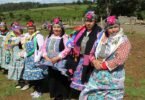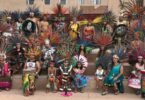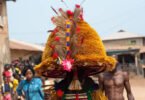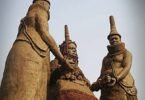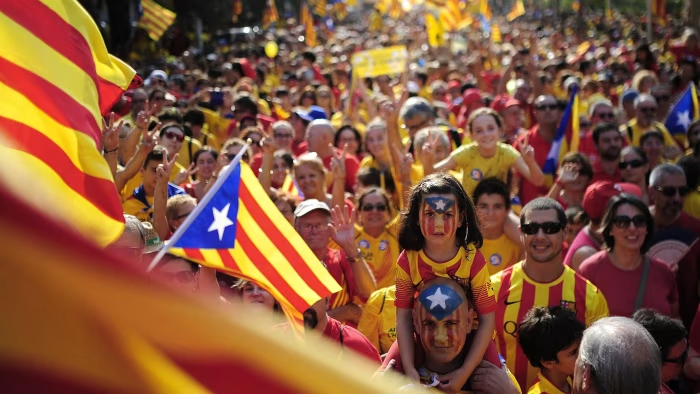
The Catalans are an ethnic nationality in the region of Catalonia in northeast Spain; with a rich and sustainable culture. Proud of their language, culture, painting and especially their food, the Catalans have built up a special identity that they have in Spain and in the world. This is an enshrinement of their past experiences, geographical situ and a passionate embrace of their heritage.
The Catalans’ history, focus on language, traditions, architectural design, food, and art is also discussed in this article.
1. Catalan Language: A Cornerstone of Identity
Catalan language (Català) is not simply a device for getting a message delivered; it is the essence of being Catalan. One of the Romance languages and originating from Latin as are most Romance languages, Catalan is also used in Valencia, the Balearic Islands and Andorra, as well as in the region of Roussillon in France.
Importance:
- Preservation: Catalans have never stopped working on the regeneration of their language after the Franco repression where Catalan language was prohibited.
- Cultural Unity: Catalan serves as a unifying force among the people, fostering pride and solidarity.
Global Influence:
Catalan literature, such as the works of Ramon Llull and Joanot Martorell (Tirant lo Blanch), has significantly contributed to European literary traditions.
2. Festivals and Traditions
Festivals of Catalonia are colourful manifestations of the culture and traditions where old and new traditions are performed side by side.
Notable Festivals:
- La Mercè: They celebrate such events as the festival of the Virgin of Mercy, during which people build human towers—castells, stage parades, show fireworks, and perform concerts.
- Sant Jordi’s Day: This is a festival celebrated on April the 23 and is like Valentine with people giving books and roses in honor of St. George of Catalonia.
- The Caga Tió and Caganer Traditions: That is why the ridiculous Christmas rituals, which are practiced only in Catalonia, and the figure of Caga Tió, a wooden log that defecates presents, and Caganer, a figure of the baby Jesus that one usually sees in a nativity scene.
Significance:
They serve to generate community spirit and reinstate Catalan culture by stimulating social celebrations and drawing millions of tourists every year.
3. Catalan Cuisine: A Taste of Tradition
Catalan food has its base on the coast of the Mediterranean Sea, which is the reason they use fresh commodities with traditional preparations.
Signature Dishes:
- Pa amb Tomàquet: A popular Italian appetiser of bread for which tomatoes are rubbed and then seasoned with olive oil and salt.
- Escudella i Carn d’Olla: A thick soup of meats and vegetables eaten during winter according to the traditional calendar.
- Crema Catalana: A custard-like desert that is similar to crème brule, which is characterised by a layer of caramel at the top.
Culinary Influence:
Catalan food can be credited with the shakeup of modern Kent cuisine by such geniuses as the Ferran Adrià and Roca brothers.
4. Architecture: A Legacy of Innovation
From an architectural point of view, Catalonia is famous for its Gothic, Romanesque, and Modernist buildings.
Highlights:
- Antoni Gaudí: The famous architect, whose works include building the Sagrada Família and Park Güell or Casa Batlló, identified with Catalan Modernism as landmarks of the city of Barcelona.
- Romanesque Churches: Romanesque art heritage comes through when visiting the Pyrenean villages of Vall de Boí, where 12 ancient churches of Romanesque architecture are a UNESCO site.
- Gothic Quarter: The Gothic Quarter remains Barcelona’s most ancient precinct with structures that resemble the Middle Ages demonstrating the colourful history of the Catalonia area.
Cultural Value:
Not only do such architectural structures encourage the worldwide admiration of the tourists but also make them feel a touch with the historic and artistic evolution of Catalonia.
5. Art and Literature
Some of the biggest and most prestigious artists and writers have come from Catalonia over the years.
Renowned Artists:
- Salvador Dalí: The startling words fertile in the rich vein of Dalí’s art—The Persistence of Memory and other works of art are individual timeless signatures that shaped the entire arts and crafts trends.
- Joan Miró: Some of his well-known pieces are abstract and colourful, which captures the spirit of Catalunya.
- Pablo Picasso: Despite the fact that Picasso was not Catalan by origin, he grew up in Barcelona and was under the influence of this city and its people.
Literary Contributions:
- Literature in the region of Catalonia is written in both Catalan and Spanish; famous authors, for instance, such as Mercè Rodoreda (The Time of the Doves) or Josep Pla (The Gray Notebook).
6. Music and Dance
Music and dance are integral to Catalan culture, ranging from traditional folk tunes to contemporary compositions.
Traditional Forms:
- Sardana: A traditional circle dance performed during festivals and celebrations, symbolizing unity and pride.
- Havaneres: Sea shanties with a Cuban influence, often performed in coastal towns.
Modern Influence:
Catalan music festivals, such as Primavera Sound and Sónar, have gained international recognition, attracting global audiences.
7. Historical Significance
Catalonia’s history is a tapestry of resilience and cultural evolution. From its days as part of the Crown of Aragon to its role in Spain’s modern history, Catalonia has consistently sought to preserve its autonomy and traditions.
Key Moments:
- Medieval Era: Catalonia thrived as a maritime power under the Crown of Aragon, establishing trade networks across the Mediterranean.
- Modern Period: The region played a significant role during the Spanish Civil War and has been at the forefront of Spain’s industrial and cultural development.
Impact on Identity:
Catalonia’s history underscores its strong sense of identity and its contributions to Spain’s political and cultural fabric.
8. The Spirit of Independence
Catalonia’s push for autonomy has shaped its cultural narrative, fostering a sense of resilience and self-determination.
Cultural Preservation:
Efforts to maintain Catalan traditions, language, and governance reflect the region’s desire to assert its unique identity within Spain.
Global Perspective:
Catalonia’s quest for recognition has drawn international attention, highlighting the importance of cultural diversity and regional identity.
Conclusion
The Catalans’ continuing identity and contributions to the globe are demonstrated by their rich cultural history. From their unique festivals and language to their delicious food and creative accomplishments, Catalonia is a shining example of cultural pride and creativity.
The Catalans’ culture continues to inspire others as they celebrate and uphold their heritage, providing a distinctive viewpoint on the importance of tradition and variety in a contemporary society.

